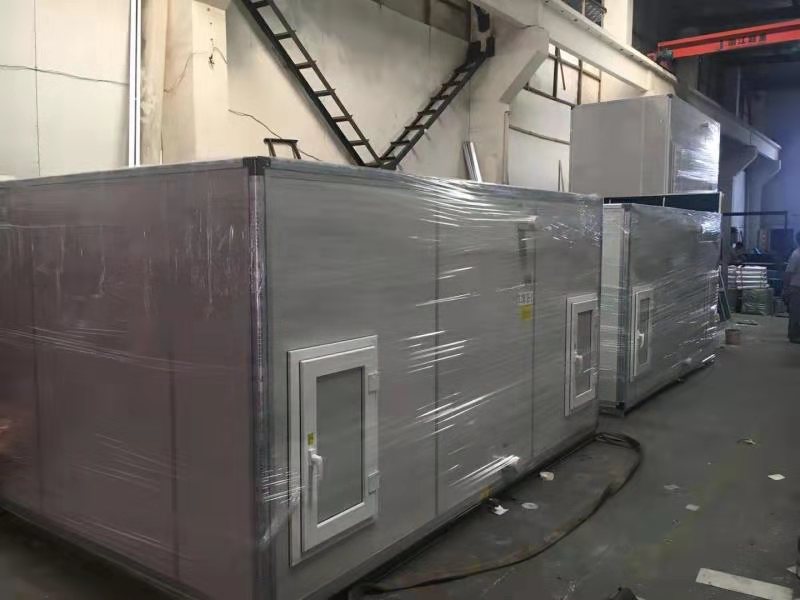Have you ever worn a disposable diaper, used a filter, or gone shopping with reusable shopping bags? If so, you’ve likely interacted with spun bond nonwoven fabrics without even knowing it. Spun bond nonwovens are versatile materials widely used in a variety of applications ranging from hygiene and personal care products to industrial filtration and construction materials. In this blog post, we’ll take a deeper look at what spun bond nonwoven fabrics are, how they’re produced, their properties, and common uses.
Spun bond non woven fabrics are manufactured through a process known as spun bonding. In this process, continuous polymer filaments are as extruded through a spinneret and drawn out onto a conveyor belt. As the filaments extruded, they cooled and drawn out simultaneously by winders, quenching towers, and rollers. This draws and orientates the filaments into long strands. The filaments are then as deposited in a randomly distributed overlapping web-like structure on the conveyor belt through mechanical drawing. They are then as bonded together, either through hot air, chemical bonding, or ultrasonic bonding to form a coherent nonwoven fabric.

The key advantage of spun bond nonwovens over other nonwoven processes
Itlike meltblowing or needle punching is that the continuous filaments retain their individual identity even after bonding. This results in nonwovens that are stronger, with higher tensile strength and tear resistance compared to other nonwoven processes. Spun bond fabrics also have very low densities, are uniform in structure and thickness, and are highly permeable to gases and liquids. Some key properties of spun bond nonwovens include:
- High strength and tear resistance
- Uniformity of structure/thickness
- Low density
- Good abrasion resistance
- Permeability to gases and liquids
- Soft hand or feel similar to woven fabrics
- Can be as produced in wide widths on continuous production lines
A wide variety of polymers can be as used to produce spun bond nonwovens including polypropylene (PP), polyester (BICHO DE ESTIMAÇÃO), polyethylene (PE), nylon, and biodegradable polymers like polylactic acid (PLA). However, polypropylene is by far the most commonly used polymer due to its good mechanical properties, chemical resistance, low cost and recyclability. The properties of the resulting spun bond fabric can be as varied by adjusting processing parameters like spinneret design, throughput rate, filament diameter, bonding methods and bond pattern.
Some of the most common applications of spun bond nonwovens include:
- Produtos de Higiene – Spun bond PP nonwovens extensively used as topsheets and backsheets in disposable diapers, adult incontinence products, and feminine hygiene products due to their breathability, absorbency and fluid handling properties.
- Spun bond PP nonwovens extensively used as topsheets and backsheets in disposable diapers, adult incontinence products, and feminine hygiene products due to their breathability, absorbency and fluid handling properties. Wipes – Wet wipes often contain a spun bond backing to provide strength and integrity to the wipe.
- Wet wipes often contain a spun bond backing to provide strength and integrity to the wipe. Filtração – Spun bond nonwovens used to make a variety of filter media for applications like air filters, liquid filters, face masks etc. due to their high permeability and particle retention abilities.
- Spun bond nonwovens are as used to make a variety of filter media for applications like air filters, liquid filters, face masks etc. due to their high permeability and particle retention abilities. Geotêxteis – In construction, spun bond polypropylene nonwovens used as separators, reinforcements and drainage meshes in applications like roads, foundations and retaining walls.
- In construction, spun bond polypropylene nonwovens are as used as separators, reinforcements and drainage meshes in applications like roads, foundations and retaining walls. Apparels – Spunmelt nonwovens are becoming increasingly popular in clothing like sports apparel and athletic gear for their moisture wicking and quick drying properties.
- Spunmelt nonwovens are becoming increasingly popular in clothing like sports apparel and athletic gear for their moisture wicking and quick drying properties. Agricultura – They used as weed barriers, mulch fabrics and silage wraps in agriculture applications.
They are as used as weed barriers, mulch fabrics and silage wraps in agriculture applications. Embalagem – Carry bags, wrappers, envelopes commonly made from spun bond nonwovens. Their high strength and moisture resistance makes them suitable for these applications.
A diverse range of industries
As you can see, the versatility of spun bond nonwovens has led to their widespread use across a diverse range of industries. Their unique combination of mechanical strength, uniformity, permeability and low cost manufacturing gives them distinct advantages over other nonwoven and woven materials. With continuous technological improvements, new spun bond processes and usage of specialty polymers, we can expect even more innovative applications to emerge for these nonwoven fabrics in the future. They are certainly playing an important role in our daily lives through their use in countless hygiene, medical, industrial and packaging products.
